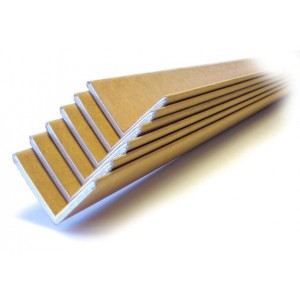
Get the best performance from your edge protection while cutting costs
An optimized length for edge protection, which actually ends short to being flush with the top of a palletized load, not only can save a company money, but also increase the strength of the entire load.
 The proper use of correctly sized corner board along with corrugated pads between pallets gives the stack the structural integrity required to support itself without risking product damage through either compression or tilting.
The proper use of correctly sized corner board along with corrugated pads between pallets gives the stack the structural integrity required to support itself without risking product damage through either compression or tilting.And our engineers can help you determine what length is best for your needs. They can show you how, by accurately sizing edge protection to the unit load, you can increase the maximum stacking strength of the entire load, or you can use less and not affect its performance.
Edge protection is something that manufacturers use on their outgoing palletized loads because it increases stability, adds stacking strength, and helps reduce damages, but most have it so that it is flush with the top of their boxes. That’s actually inefficient. They can increase the strength of their entire palletize load by allowing both the boxes and protection to work together more efficiently. When the efficiency of the palletized load is increased, it can mean either greater performance, or cost savings.
Finding the amount the edge protection should be shortened is a simple math equation: subtract the deflection at max compression from the deflection at max compression of the column of boxes. The difference is the ideal amount the edge protection should be shortened from the top of the load.
This is possible because both products deflect at different rates. By accurately sizing the edge protection, both the edge protection and the boxes work together to dramatically increase the stacking strength of an entire load.
Making this small change can increase the performance of the unitized load without adding any material or cost. Or, with the increased performance, there is an opportunity for cost savings by reducing the packaging material.
See also:






